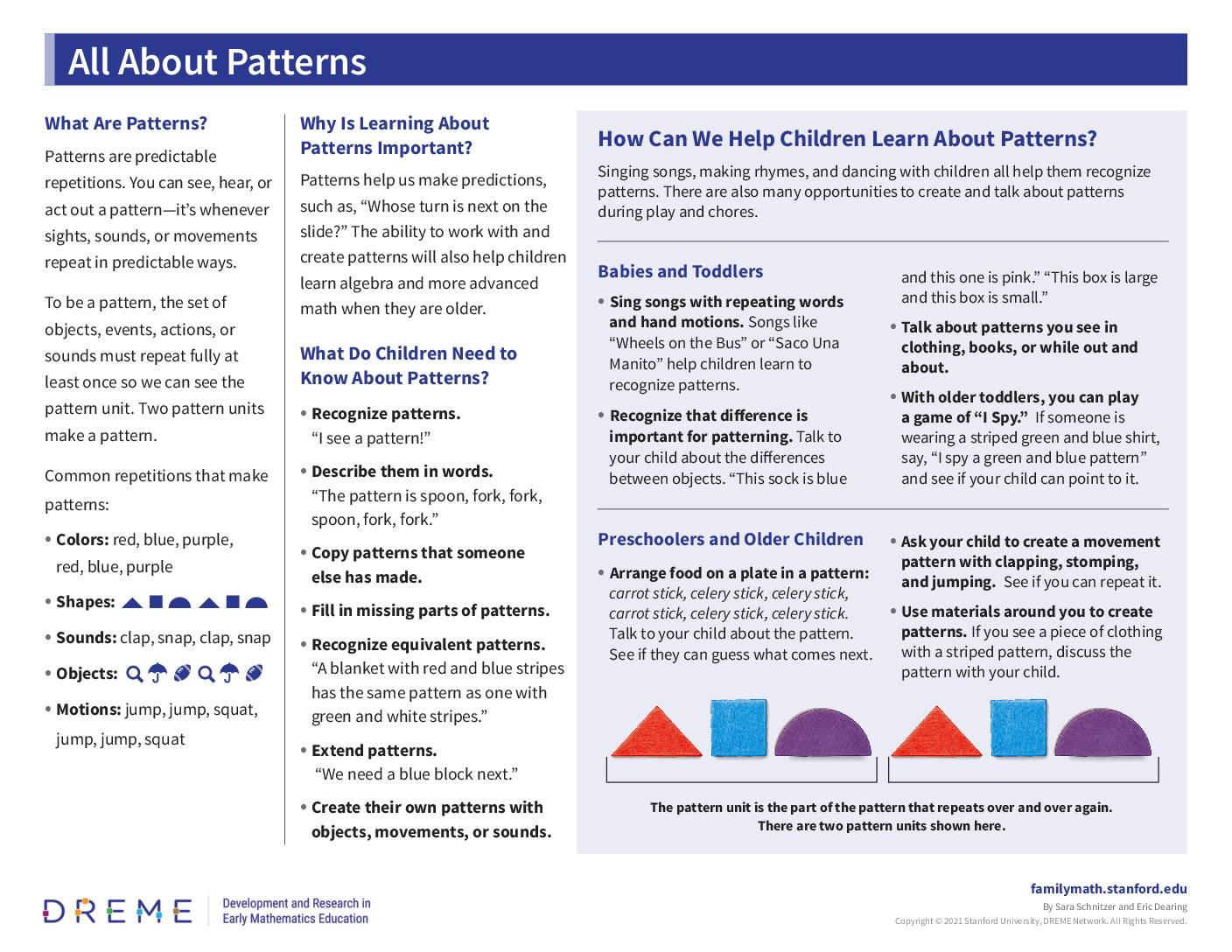
What Are Patterns?
Patterns are predictable repetitions. You can see, hear, or act out a pattern—it’s whenever sights, sounds, or movements repeat in predictable ways.
To be a pattern, the set of objects, events, actions, or sounds must repeat fully at least once so we can see the pattern unit. Two pattern units make a pattern.
Common repetitions that make patterns:
- Color: red, blue, purple, red, blue, purple
- Shape: triangle, square, half-circle, triangle square, half-circle
- Sound: clap, snap, clap, snap
- Objects: 🐶🐼🐷🐶🐼🐷
- Motion: jump, squat, jump, squat
Why Is Learning About Patterns Important?
Patterns help us make predictions, such as, “Whose turn is next on the slide?” The ability to work with and create patterns will also help children learn algebra and more advanced math when they are older.
What Do Children Need to Know About Patterns?
- Recognize patterns. “I see a pattern!”
- Describe them in words. “The pattern is spoon, fork, fork, spoon, fork, fork.”
- Copy patterns that someone else has made.
- Fill in missing parts of patterns.
- Recognize equivalent patterns. “A blanket with red and blue stripes has the same pattern as one with green and white stripes.”
- Extend patterns. “We need a blue block next.”
- Create their own patterns with objects, movements, or sounds.
